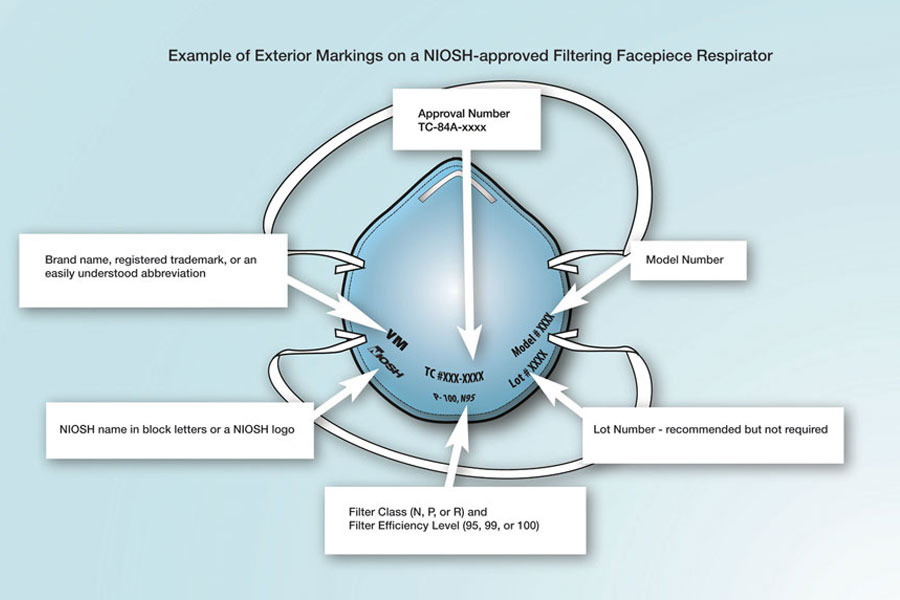May 21, 2021
How to Spot a Fake PPE Mask

Millions of counterfeit masks have been seized by federal agents and millions more are likely still in use.
Liability and health risks from counterfeit PPE (personal protective equipment) masks is a growing problem. Federal agents and others have seized more than 11 million counterfeit masks, including the N95 masks used in hospitals.
According to the CDC, counterfeit respirators are products that are falsely marketed and sold as being approved by National Institute for Occupational Safety and Health (NIOSH) and may not be capable of providing appropriate respiratory protection to workers.
Signs that a respirator may be counterfeit:
- No markings at all on the filtering facepiece respirator
- No approval (TC) number on filtering facepiece respirator or headband
- No NIOSH markings
- NIOSH is spelled incorrectly
- Presence of decorative fabric or other decorative add-ons (e.g., sequins)
- Claims for the of approval for children (NIOSH does not approve any type of respiratory protection for children)
- Filtering facepiece respirator has ear loops instead of headbands.
How to identify a NIOSH-Approved Respirator:
First, check the respirator approval markings using the Example of Correct Exterior Markings on a NIOSH-Approved Filtering Facepiece Respirator graphic on this page.
NIOSH-approved respirators have an approval label on or within the packaging of the respirator (i.e., on the box itself and/or within the users’ instructions). Additionally, an abbreviated approval is on the FFR (filtering facepiece respirator ) itself. You can verify the approval number on the NIOSH Certified Equipment List (CEL) (https://www.cdc.gov/niosh/npptl/topics/respirators/cel/default.html) to determine if the respirator has been approved by NIOSH. NIOSH-approved FFRs will always have one the following designations: N95, N99, N100, R95, R99, R100, P95, P99, P100.
